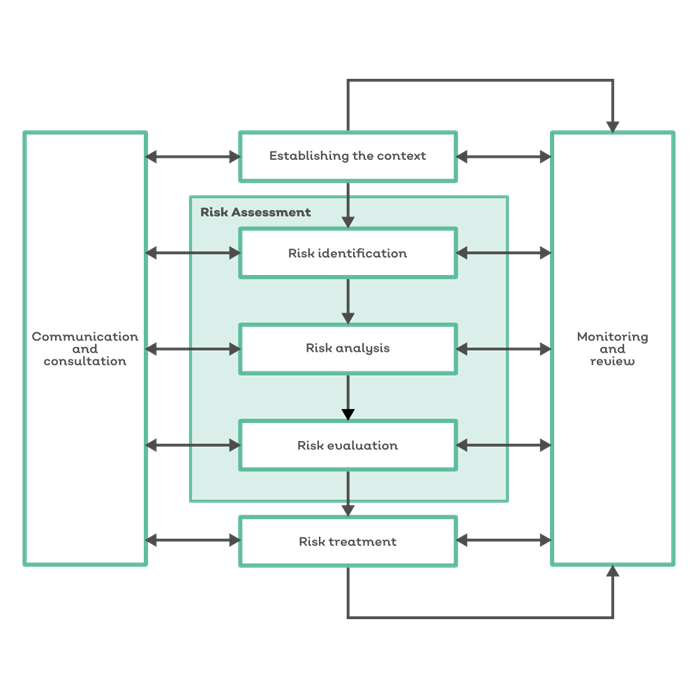Search is based on keyword.
Ex: "Metadata"
Do not search with natural language
Ex: "How do I create a new metadata type?"
Leave Feedback
Introduction to EQMS Risk Management
Audience: Risk Administrators, Risk Managers
Now that the settings have been configured and the assets have been created you can now use the system to aid the management of risks. The flexibility of the system means that you can always create new and/or amend assets, settings and information to meet your current Risk Management needs. Following the Risk Management Process Flow, the rest of the guide will lead you through handling risks from creation/submission through to the approval process.
Note:
Only Risk Managers and Risk Administrators can raise Risk records. However, Risk Users can still raise Risk Suggestions if the feature has been enabled in your system by an Administrator
Risk Management Process
EQMS Risk Manager helps to support the full Risk Management process as shown below:

Major Functional Areas
- Risk Suggestions
Risk suggestions allow you to open up the Risk Register to a larger userbase, giving your users a chance to highlight possible Risks as ‘Risk Suggestions’
- New Risk
Risk records can be raised here based on the templates created in Risk Types.
- Risk Records
A filterable list view of all Risks currently in the system
- Risk Types
To help with the assessment of risks and any subsequent action and analysis, Risks are categorised within a hierarchy of Types. Each Risk Type acts as a template for the creation and assessment of Risks of that Type.
The functionality provided enables Types to be added to, removed from and positioned in the list. It also enables the imposition of control over whether Risks having a specific Type must be Assessed by a Workflow controlled process and over who can set the status of a Risk to Approved. You can also associate additional Metadata (organised in sections) with Risks Types
